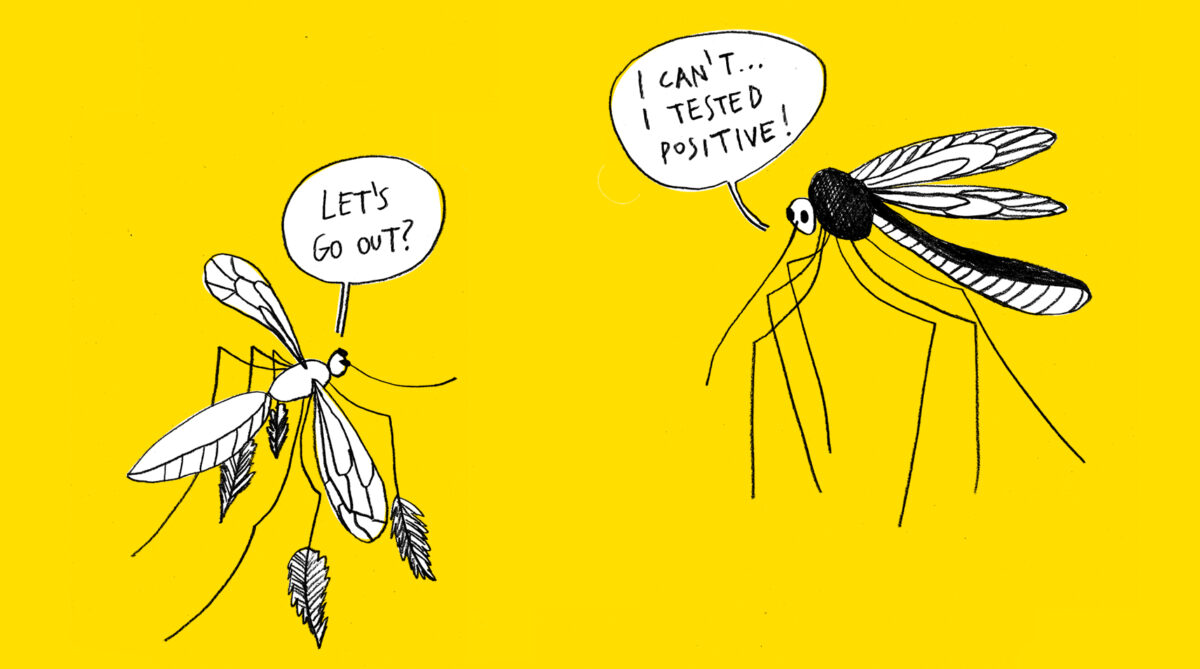 #News
#News
Potential new yellow fever vector
Researchers seek ways of identifying adjustments needed in the surveillance and control of species that transmit the disease
 Illustration: Walter Rego/Estúdio Voador
Illustration: Walter Rego/Estúdio Voador
Scientists are looking for new ways to improve the surveillance of yellow fever, which is endemic in Brazil and is transmitted by infected mosquitoes of the genus Haemagogus, Sabethes, and Aedes. The country has learned to live with regular sylvatic transmission in the rural Amazon region, but the disease occasionally spreads to other areas.
The last outbreak, which occurred between December 2016 and 2018, was considered the biggest in eight decades. It started in the interior of the state of Minas Gerais, before quickly spreading to other states in the Southeast. Between 2016 and 2018, a total of 1,865 human cases and 744 deaths were recorded in the region, which is not included in the country’s yellow fever vaccination program.
Currently, data on wild vectors are obtained during investigations into suspected events in humans and the surveillance of nonhuman primates. In a study published in the journal Tropical Medicine and Infectious Disease, a group of Brazilian researchers analyzed this approach, usually considered complementary, as a tool for early detection of viral circulation and to find an epidemiological link with epizootics and human cases under investigation.
According to the scientists, while entomological sampling is focused on the best-known and potential vectors of sylvatic yellow fever in a specific region, viral detection in mosquitoes can help predict how an outbreak is likely to escalate and determine the possible vectors involved in transmission.
The team analyzed 2,904 mosquito vectors collected in six states (Bahia, Goiás, Mato Grosso, Minas Gerais, Pará, and Tocantins) between January 2016 and April 2017. The mosquitoes were separated into 246 sample pools of 1 to 30 specimens, selected by collection region and date. Real-time PCR testing revealed that 26 pools were positive for viral presence. Of these, five contained samples collected in Goiás (from Jandaia, in the Cerrado biome, in 2016) and one collected in Bahia (from Cocos, in the Cerrado biome, in March 2017).
The state with the most positive samples was Minas Gerais, identified in 20 pools. The samples were collected in ten municipalities, primarily in Alvarenga, Caratinga, and Ituêta, during a ten-day period.
- Haemagogus mosquitoesaccounted for 21.3% of the samples and 20.3% of the pools.
- Sabethes mosquitoesaccounted for 6.7% of the samples and 16.6% of the pools.
- Aedes mosquitoesaccounted for 71.9% of the samples and 63% of the pools.
The Aedes genus includes the species Aedes aegypti and Aedes albopictus. The former is largely responsible for urban transmission in Brazil. Since the late 1980s, A. albopictus has also spread across the country, and more than 1,000 municipalities have reported its presence around housing and in adjacent natural or modified environments. Five samples that met the minimum required quality standards for DNA extraction were also sequenced.
According to the researchers, the samples from Minas Gerais, Goiás, and Bahia, as well as the DNA sequencing data, suggest that yellow fever is likely to reemerge, with A. albopictus as a new potential bridge vector between sylvatic and urban transmission.
The authors argue that entomo-virological surveillance is a crucial strategy, linking and confirming data on active transmission of the virus to nonhuman and human primates. In addition to shedding light on the involvement of unusual or potential vectors of the disease, the approach can indicate the need for adjustments in syndromic surveillance and monitoring of deaths among nonhuman primates, vaccination coverage, and vector control.
*
This article may be republished online under the CC-BY-NC-ND Creative Commons license.
The text must not be edited and the author(s) and source (Science Arena) must be credited.


